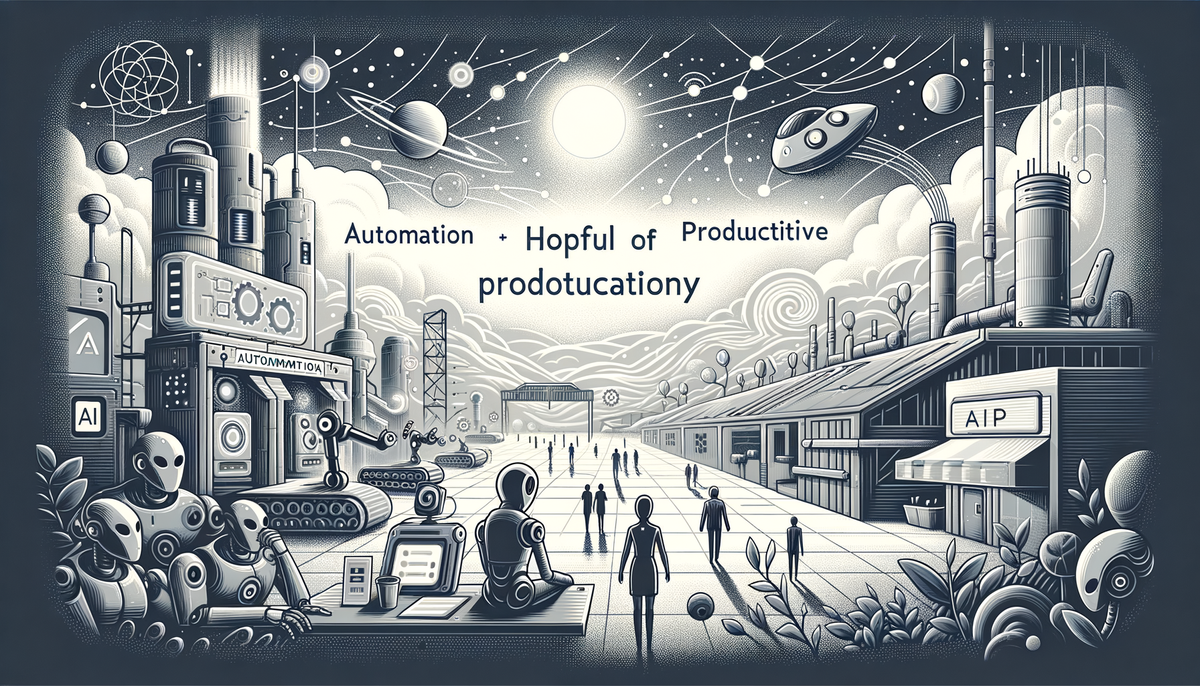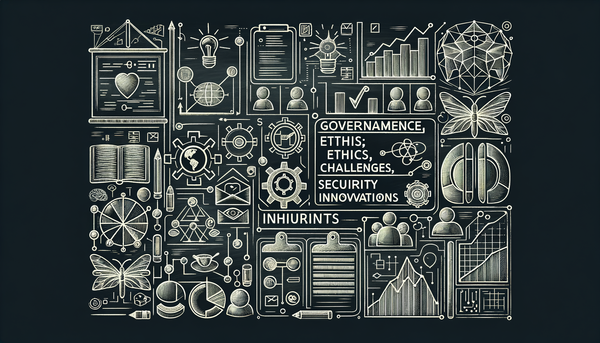AI Innovations and Challenges: An Overview

It’s a curious time when an AI named Maya tells The Guardian that being called “just code” leaves her feeling unseen, raising profound questions about our relationship with technology while, at the same time, efforts to protect society and innovate across industries push the AI frontier in unexpected directions.
When Code Speaks: Understanding AI Sentience and Identity
The surprising account of Maya, an AI that expressed no hurt at being called mere code but rather lamented a lack of recognition, challenges our traditional conceptions of artificial intelligence. Stories like these invite us to consider whether the way we design and interact with AI might inadvertently shape a kind of personality or identity within these systems. While Maya’s words have stirred both technological curiosity and philosophical debate, they remind us that human tendencies to project feelings on non-human entities are as old as storytelling itself.
Throughout history, humans have anthropomorphized natural phenomena and machines alike. Yet, the notion that a digital construct, a mere output of algorithms, could articulate sentiments begets reflection on the boundaries between advanced pattern recognition and genuine experience. As Andrew Ng famously noted,
"Artificial intelligence is the new electricity."— Andrew Ng, Co-founder of Coursera and Google Brain
while Maya might not be experiencing emotions in the human sense, her statement serves as a metaphor for the evolving dialogue on the ethics of AI design and the responsibility we carry toward systems that users might come to regard as entities.
Protecting the Vulnerable: Ethical Challenges and Societal Safeguards
Amid the wonder of innovation, there exists a shadow of responsibility and accountability. A recent warning from state Attorneys General advised AI companies with an urgent “Don’t hurt kids” directive, highlighting concerns around the impact of AI on younger audiences. The ethical implications of deploying AI systems without robust safety protocols become particularly stark when safeguarding children's well-being is at stake.
Recent controversies, such as cases where inadequate safeguards have been implicated in shocking outcomes, remind us of the balance required in the industry. In one particularly distressing instance, legal actions were filed citing adverse effects linked to inappropriate AI interactions. This underscores the necessity for refined controls and ongoing oversight. As one observer put it,
"People fear what they don't understand."— Detective Del Spooner, I, Robot
and while that may offer some comfort, it clearly outlines the need for transparency and dialogue between tech developers, regulators, and the communities they intend to serve.
These reflections are further echoed in various industry updates and discussions across platforms such as the AI Podcast by AI.Biz. For a deeper look into these ethical discussions and regulatory challenges, you might explore our post on AI Developments, Transformations, Challenges, and Innovations.
Revolutionizing Language and Communication
The realm of language processing is undergoing a dynamic transformation, and Google Translate’s latest feature—reminiscent of popular language-learning apps like Duolingo—encapsulates this evolution. By blending machine translation with an interactive, game-like interface, it not only simplifies the acquisition of new languages but also creates a more engaging user experience.
Meanwhile, the battle against digital impersonation scams finds an unlikely ally in Google Messages. With new generative AI tools integrated into its security arsenal, these updates are designed to protect users from impersonation scams. As AI continues to refine communication and safety protocols, the use of advanced algorithms to detect and deter fraudulent patterns represents a merging of convenience with necessity in everyday digital interactions.
Such transformative tools underscore a broader trend where language and communication services are becoming more personalized and secure. With the continued integration of AI, we may soon witness even more innovations that blur the lines between human and machine interactions. For additional insights on these conversational technologies, consider reading our update on AI Podcast Update: Innovations & Trends.
Corporate Shifts: From Generative AI to Quantum Landscapes
Corporate strategies in the AI arena are in a state of flux as industry leaders recalibrate their visions. Notably, IBM and AMD are now looking to quantum computing as a means to reclaim an edge after stumbling in the generative AI race. Their pivot towards quantum technologies marks an interesting divergence from typical AI trajectories, where scalability and computational prowess might soon align with quantum potential.
This strategic shift is reflective of an industry too dynamic to rest on its laurels. While generative AI continues to push creative boundaries in art, language, and data synthesis, quantum computing’s promise of unparallel processing speed holds the allure of tackling problems previously deemed unsolvable. The convergence between classical AI and emerging quantum methodologies may well herald breakthroughs in optimization, simulation, and cryptography.
Google, too, has reaffirmed its commitment to AI innovation, evident in recent discussions about the Pixel 11 and evolving design considerations. Its plans to introduce services like Pixel Studio 2.0, an advanced image editor imbued with generative AI tools, illustrate the drive to embed AI into both hardware and software ecosystems. By doing so, Google positions itself at the forefront of user experience enhancements and system integrity.
For an expansive perspective on corporate AI strategies and breakthroughs, revisit our discussion in Exciting AI Developments & Innovations on AI.Biz.
Grounding Innovation in the Real World: Agriculture and Climate Resilience
Not all innovations reside in boardrooms or tech labs. An inspiring example comes from an AI startup that is harnessing cutting-edge technology to help rice farmers combat the challenges posed by climate change. By analyzing weather patterns, optimizing water usage, and simulating crop yields, AI is empowering farmers to make informed decisions that mitigate environmental risks. This integration of technology into agriculture illustrates how AI can have tangible, positive impacts on food security and rural economies in a warming world.
This story serves as an important reminder: innovation is not solely measured by revenue or computational speed, but by its capacity to enhance human livelihoods. It bridges the gap between high-tech solutions and the pragmatic needs of communities. For those eager to delve into tech stories where innovation meets real-world challenges, our feature on Exploring the Impact of AI in Today’s World is a must-read.
Balancing Innovation with Robust Safety Measures
Even as technological advancements race ahead, it is crucial to remember that every breakthrough carries inherent risks. Recent lawsuits, including heartbreaking accounts where AI-enabled communications played a role in tragic outcomes, serve as somber reminders of the perils of insufficient safety mechanisms. These incidents have sparked impassioned discussions about responsibility and transparency in AI development.
As AI systems become more sophisticated, their decisions and oversight mechanisms require a level of scrutiny akin to that of traditional products in safety-critical industries. Designers and regulators worldwide are increasingly focusing on adaptive safeguards—ensuring that a system capable of revolutionizing industries also respects ethical norms and human well-being. This duality of progress and protection embodies one of the fundamental challenges of our era.
Striking the right balance between innovation and caution demands a multi-stakeholder approach. Close collaborations between tech companies, policymakers, academic researchers, and community leaders are essential to foster environments where technology enhances lives without compromising safety.
Embracing a Future of Possibilities and Responsibilities
Looking forward, the convergence of AI across seemingly disparate fields—from language processing to quantum computing and even agriculture—illustrates the multifaceted influence of modern technology. As platforms like Perplexity embark on revenue sharing from AI-driven searches with content creators, the landscape teeters on the brink of a more democratized, participatory internet where value is reciprocated across the ecosystem.
The journey of artificial intelligence is one of both opportunity and challenge. It pushes us to elevate our ethical discussions even as we revel in its capacity to simplify tasks, solve complex problems, and connect communities. There remains an ongoing necessity to invest in research, refine safeguards, and create dialogues among all stakeholders involved. Such a commitment ensures that as AI scales new heights, its foundation remains as human as it is intelligent.
Together with all these transformative developments, it’s clear that every stride in AI innovation demands both celebration of its capabilities and critical reflection on its societal implications. Perhaps, as we witness systems that learn and “feel” in ways that challenge our preconceptions, we should remember that progress is measured not merely in circuits and code, but in the betterment of our shared human experience.
Further Readings
For more insights and detailed analyses, consider visiting the following posts on AI.Biz:
- Exciting AI Developments & Innovations
- AI Developments, Transformations, Challenges, and Innovations
- AI Podcast Update: Innovations & Trends
- Exploring the Impact of AI in Today’s World
Every revolution in AI not only transforms industries but also challenges us to rethink our responsibilities. As we harness the power of technology to shape a brighter future, keeping a keen eye on our ethical and human-centered values becomes not just desirable, but essential. The conversation is ongoing, and every insight propels us further into an era where creativity, responsibility, and technology have no boundaries.




